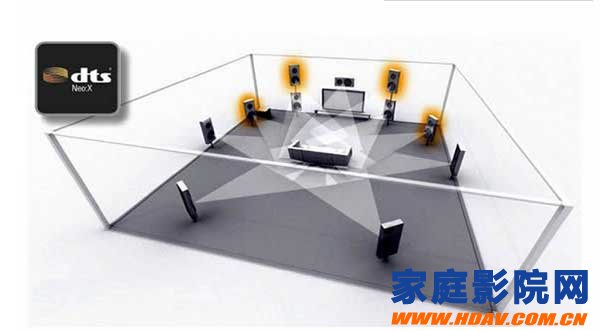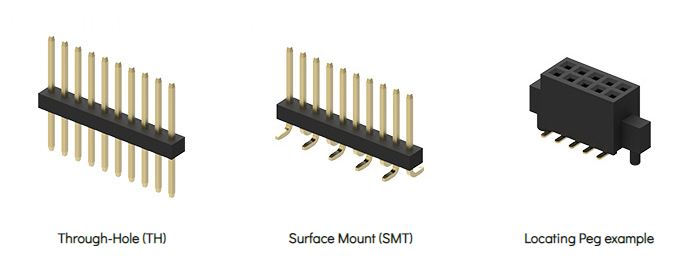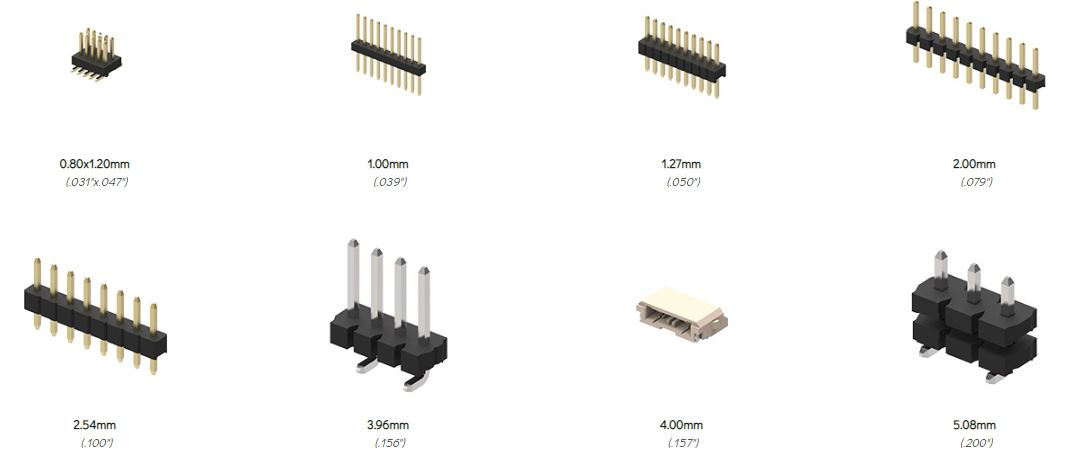[Home Theater Network] DTS Corporation (Nasdaq 2001, code: DTSI) is a digital high-tech company focused on developing high-quality entertainment experiences. To provide consumers with a full range of audio technology solutions including coding technology, decoding technology and post-processing technology. Consumers can experience DTS technology through hundreds of millions of consumer electronics products worldwide. DTS, a pioneer in the traditionally renowned multichannel audio technology, has evolved into a must-have audio standard for Blu-ray and is used in a wide range of applications for digital video transmission and consumer electronics platforms related to various other Internet technologies. With the acquisition of SRS Labs by DTS in 2012, its leadership in providing end-to-end audio solutions in the fast-growing online entertainment industry is more solid. DTS currently stands in home theaters, DVD players, TVs, set-top boxes, HD media players, car audio systems, smartphones, surround sound music software and any device that can play Blu-ray discs. Founded in 1993, DTS is headquartered in Hollywood, California, USA and entered China in 2002.

Prior to the advent of Jurassic Park, Spielberg was looking for techniques for rich sound performance. Dolby Digital stores sound data between the perforations of motion picture film. Because of space constraints, a large number of compression modes must be used, so that part of the sound quality has to be sacrificed. DTS solved this problem in a simple way by storing the sound data in another CD-ROM and synchronizing it with the image data. In this way, not only the space is increased, but also the data traffic can be relatively large, and the CD storing the sound effect data can be replaced to play different language versions. The sound of Jurassic Park is so vivid that it will be a hit. DTS is also beginning to focus on the process of developing high quality entertainment experiences!
Chinese name DTS
Time to market in 2001
Listing place Nasdaq
Company Location Hollywood, California, USA
table of Contents
One of DTS's early founders was film director Steven Spielberg. Before the company was founded, he felt that the theater audio system was no longer in level and that the sound quality was the most important premise. No longer ideal. The DTS audio format was developed in 1991 and is only four years after the other mainstream format of Dolby Digital. The DTS's most common and basic channel configuration is 5.1 channels, similar to Dolby Digital's configuration, which encodes five main (global) channels and one low frequency channel.

Note that both the encoder and the decoder support different combinations of channel configurations (2.0, 4.0, 4.1, etc.) and have also been distributed on DVD, CD and LD.
Other new DTS standards have also been introduced, including support for 7.1-channel DTS-ES. DTS's main competitors in multi-channel cinema audio are Dolby Digital and SDDS, but only Dolby Digital in the home. DTS's film was Spielberg's 1993 work Jurassic Park, which came out a year later with the return of Batman. In addition, Jurassic Park became the first home software with DTS audio track (appeared in January 1997). Two years later (January 1995) "Blasting" LD became Dolby Digital's first home software work.
Copy negatives printed with four format tracks - (left to right) SDDS (edge ​​blue bar), Dolby Digital (gray grid between holes), photoacoustic track (two white lines) and DTS timecode (Dash line) In cinema use, DTS data is copied onto the film by a special time code in an optical printer. The optical LED reader reads the time code and transmits it to the DTS processor for sound and picture synchronization. The actual bit rate of compressed audio in a standard CD-ROM is 1103 kbps. The processor is also responsible for reading the audio role in the DTS disc. The new processor can load three CD-ROMs or store them on a hard disk. In addition, the printed time code contains metadata for identification, in case the wrong disc is misread after being loaded.

Based on the above innate factors, DTS stores audio on CD-ROM, which is more detailed and clearer than Dolby Digital. The separation of the audio and the time code eliminates the risk that the film is damaged equal to the damage of the audio, but once the film time code is damaged, the audio in the disc cannot be played out in disguise.
Calabasas, Calif., July 23, 2012 (GLOBE NEWSWIRE) - DTS, a leader in high-definition audio (Nasdaq: DTSI), announced that its previously announced acquisition of SRS Labs (Nasdaq: SRSL) has been successfully completed. Trading, SRS Labs is a leader in audio processing and lifting technology. Prior to the completion of the transaction, both parties had reached all the conditions for completing the transaction, including obtaining some regulatory approvals, and obtaining the SRS Labs shareholder approval for the transaction on July 20, 2012. The sale of SRS Labs' common stock on the Nasdaq global market has been discontinued. The deal will help DTS further expand its strong audio-related technology intellectual property, making it one of the industry's most extensive audio intellectual property companies. Finally, the addition of SRS to the DTS family will help DTS address the sound quality limitations of thinner and smaller device trends, and believe it will provide consumers with any device with a premium audio experience anytime, anywhere.
DTS is a high quality multi-track surround sound technology for movies and music. DTS uses sound correlation to efficiently compress data so that the sampling rate reaches 192KHz at 24-bit. Compared with CD, CD uses linear PCM coding, and the sampling rate is only 44.1KHz at 16-bit.

Sampling is required when converting an analog sound signal to a digital signal. The CD consists of two tracks, which are sampled 44,100 times per second (44.1 kHz) using a 16-bit PCM method, and the samples can be quantized to 65,536 (2 to the 16th power) levels. The 24-bit samples can be quantized to 16,777,216 levels. This huge difference allows the sound to be recorded more realistically, and is smoother and more dynamic, making the sound reproduction closer to the original effect.
DTS was released into the theater by Jurassic Park in 1993. The DTS is a 6-channel surround system similar to Dolby, but it has some big differences with Dolby and is used by many theaters like Dolby.
In theaters, Dolby records sound coding with movies, while DTS uses a separate CD to store sounds and uses a synchronization technique to align sound with images. At the same time, DTS stores the two backup channels together with the movie for use when there is a problem with the CD stereo.
Not all Dolby uses 6-channel (5.1) on DVD or CD. Dolby audio tracks range from mono to 6 channels, and a large number of released Dolby discs are not 6-channel, and many use 4-channel or even mono. DTS releases 5.1DTS high-quality 6-channel surround sound, and does not add any sound enhancement processing during DTS data processing. DTS simply uses high sampling rates and uses heavily validated human-audio-based data compression techniques for sampling.
For home theater enthusiasts, there are many ways to add DTS to their systems. The DTS disc has been around for a few years, and its sound is perfect, but the DTS disc is still relatively small. DTS is also looking for a more suitable location in the optical disc market.
There are also fewer DVDs with DTS, which have better sound than Dolby: the sound is more dynamic and smoother, and the bass is sharper and deeper.
Some CDs use DTS encoding. Generally, 20-bit recording is used, and the sound efficiency is obviously improved compared with the standard 16-bit encoding, and most of them are 6-channel (5.1).
Many Blu-ray movies use DTS-encoded audio tracks. However, many domestic LCD TVs do not purchase DTS copyright due to cost issues. When copying a movie to a USB flash drive and then connecting it to the TV's USB interface, only images will appear. There is no sound condition. One solution is to use software to convert the audio track to AC3 format.
DTSPremium Suite technology
This technology leads PC digital audio upgrade. DTSPremium Suite technology is a complete digital audio playback solution designed for PC products, including DTS-HD Master Audio, DTS Connect, DTS Surround Sensation UltraPC, DTS Symmetry and DTS Boost. Laptops, netbooks, desktops and related peripherals bring more detailed, more surround sound audio playback. The introduction is as follows:
(1) DTS-HD MASTER AUDIO: Lossless Master Perfect Audio
Designed for Blu-ray video with 7.1-channel audio, it is the best HD audio decoding technology that delivers audio that is aligned with the recording master. DTS-HD Master Audio allows consumers to enjoy the most beautiful 7.1-channel surround sound.
(2) DTS CONNECT: Interconnecting PCs with home theaters
This technology enables high-quality digital audio intercommunication between laptops and PCs and home entertainment systems, converting any stereo digital audio stream into surround sound through a home theater system and playing it through a 5.1 system.
(3) DTS SURROUND SENSATIONULTRAPC: PC-specific DTS surround sound
DTS Surround Sensation UltraPC uses state-of-the-art post-processing technology to produce stunning surround sound with just two speakers or headphones. This technology allows consumers to enjoy the best surround sound even on the most common speakers or headphones, whether they are listening to stereo or surround sound.
(4) DTS SYMMETRY: Optimal volume consistency between different program content
Due to the unstable sound level, different media sources may cause loss of audio transmission, so that the volume will suddenly change suddenly; for example, the sound Clips on each network video have different volume levels. DTS SYMMETRY balances the sound level of audio between programs, so that consumers can enjoy any program without being affected by sudden changes in volume due to different media sources.
(5) DTS BOOST: Enhance the loudness of the target system
This technology utilizes advanced audio processing to enhance the perceptible, undistorted loudness produced by existing notebook built-in speakers. DTS BOOST can help consumers get rid of the limitations of most laptops in terms of sound power and enhance the audio experience.
DTSEnvelo technology
DTSEnvelo technology enables immersive surround experiences for listeners of portable entertainment products such as iPods or iPhones;
DTS Envelo technology enables consumers to experience a highly enhanced and enveloping entertainment experience through portable entertainment products such as iPods or iPhones, whether listening to mono, dual or 5.1 surround sound. The docking station uses DTS Envelo technology to create clear dialogues, crisp high frequencies and low frequencies, allowing the listener to experience an immersive surround experience.
The DTS Envelo Speaker and DTS Envelo Headphone technologies are already available through Neofidelity's silicon solution for docking products. NeoFidelity is the world's leading provider of all-digital audio amplifier chips for flat panel TVs. Their NMP-5000 series chip solution is an optimized digital audio amplifier loaded with DTS Envelo | Speaker and DTS Envelo | Headphone technology. According to NeoFidelity, the primary application target of the NMP-5000 series chips is the iPod docking station. In addition, the series chips can also be used in other consumer audio and video products.
7 playback device
To output DTS signals, you must have a DVD player. Most newer players have this feature. There must be a DTS decoder in the receiving device or a separate processing system in between.
The player used to play DTS discs must have a digital output function. Both DTS discs and DTS CD playback systems must have a DTS decoder.
format
In addition to the standard DTS 5.1 encoding, DTS has developed several different technologies to compete with Dolby Laboratories for its applications. The main techniques are as follows:
DTS 70 mm
This technology is applied to DTS playback in 70 mm negative film. The 70 mm copy with the DTS time code does not have a six-channel tape track, so there is no backup analog audio in the event of a digital signal error. Usually the theater will install two time code readers to ensure smooth playback.
With the decline of the 70 mm cinema, the DTS 70 mm has become the format used for film restoration and replay. Dolby Digital has never been involved in 70 mm technology.
Iwerks 70 mm is still available in DTS 70 mm format for audio formats. (Examples include: 4D Super Stereo Screen Gallery)
DTS-ES
DTS Extended Surround is a 6.1-channel version of DTS based on Digital Sound/Digital Surround. It is divided into Matrix (modeled from 5.1 to 6.1 in matrix) and Discrete (native 6.1 channel compression). Used in theaters and DVDs. The opponent in this format is Dolby Digital EX.
DTS NEO: 6
Analog multichannel technology applied to amplifiers has the same principles as Dolby ProLogic IIx technology.
DTS 96/24
DTS's high-sampling, detailed version based on Digital Sound/Digital Surround has a sampling rate of up to 96 kHz and rises to 24 bits per sample bit. Applied on DVD.
DTS-HD Master Audio
Main article: DTS-HD Master Audio
Sound format published under Blu-ray Disc and HD-DVD next-generation Blu-ray media. LPCM sound information up to 8 channels, 192 kHz/24 bits is compressed in a lossless manner.
DTS-HD High Resolution Audio
Published with Master Audio, but with lossy compression.
DTS Connect
DTS Connect is the collective name for two computer audio technologies that convert computer audio into DTS audio and output it to compatible decoders via S/PDIF wiring. These two technologies are called DTS Interactive and DTS Neo:PC.
DTS Interactive: is a DTS real-time encoder that converts computer audio into a 1536 kb/s DTS audio stream output.
DTS Neo: PC: is an analog multi-channel technology based on DTS Neo:6, which simulates two-channel audio such as MP3, WMA, CD audio or game, into 7.1-channel audio, and DTS audio through S/PDIF. Wiring output to the decoding equipment.
DTS Surround Sensation
Formerly known as DTS Virtual, it allows the 5.1 sound to be simulated with headphones. The competitor is "Dolby Headphones". Home Theater Network official WeChat: cnhifi.
Antenk manufactures a wide range of application specific board stacking connectors which were designed and built to specific customer requirements. Our experienced staff has developed custom products in a variety of contact styles, pitches and stacking heights. Our designs range from new concepts to duplicating existing market products identically or with improvements. Many desigsn are produced using automated manufacturing processes to increase reliability and provide significant cost savings
Board to Board Connector
Board-to-board (BTB) connectors as the name indicates is used for connecting circuits board together. This kind of connectors are suitable for stacking circuits boards one over another. Flat flexible cables can be avoided using these kinds of connectors; moreover it makes the entire unit more compact. The commonly used BTB connectors are SMT connectors and Berg Strip. We will discuss about them in detail in the following section.
SMT CONNECTOR
Surface Mount Technology (SMT) connector is a commonly found board-to-board connector in advanced circuit boards. As the name indicates this connector is available only in surface mount model. It is carefully mounted on to the solder pads on the surface of the PCB.
SMT connectors are ideal candidate for miniaturization due to their small area of occupancy and stacking height. They are suitable for double layered or multilayered PCBs. They are designed for high performance and reliability.
They commonly found in advanced circuit boards in networking equipment, telephones, mobile phones, computers and other consumer electronics.
Board-to-board (BTB) connectors are used to connect printed circuit boards (PCB), electronic components that contain a conductive pattern printed on the surface of the insulating base in an accurate and repeatable manner. Each terminal on a BTB connector is connected to a PCB. A BTB connector includes housing and a specific number of terminals. The terminal is made from a conductive material (mostly copper alloy), and plated to improve conductivity and antirust. Terminals transmit the current/signal between PCBs connected by BTB; the housing is made of insulating material (mostly plastic).
The basic types of Board to Board Connector
Broadly speaking, Board To Board Connectors are manufactured in the following types:
Pin Header
Elevated Pin Header
Socket
Elevated Socket
Shrouded Header
Box Header

The way mount Board to Board Connectors on a PCB
board to board connectors are available in through hole (TH) and Surface Mount (SMT) variants.
Locating pegs (also referred to as locating posts, alignment pins or board locks) are used to assist alignment of connectors to the PCB. Locating pegs are particularly useful when using surface mount components.

board to board connectors are available in the following pitches: 04mm/0.5mm/0.8mm/1.0mm/1.27mm/2.54mm/3.96mm/4.0mm
For experienced hardware designers choosing board to board connectors is second nature, for the uninitiated it can be daunting. We offer design support and will help guide you through the options available. If you need help with your board to board connector design, contact antenk. Where required antenk also offer non standard pitches.

Board To Board Connectors
0.4mm Board To Board Connectors,0.5mm Female Board To Board Connector,0.8mm 1.0 mmPcb Board To Board Connector,Board To Board Terminal Connectors
ShenZhen Antenk Electronics Co,Ltd , https://www.antenk.com